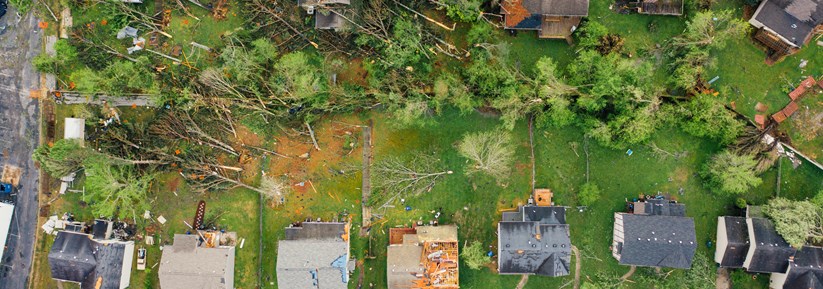Reinstatement Cost Assessments for insurance purposes (RCAs)

Historically, valuations for insurance purposes were undertaken by the valuation surveyor as part of their brief to provide a market value. The insurance value was often a highly caveated, indicative opinion as to what figure should be given to the customers’ insurers when setting up an insurance policy, after purchase of a property. It became clear to RICS and practitioners that the advised figure was being relied upon by customers and insurers and there was a potential for a liability, resting on the surveyor, for shortfalls on insurance pay-outs, even where their reports contained caveats.
The Reinstatement Cost Assessment for insurance purposes (RCA) is now recognised as a discipline in its own right. The assessment should never be thought of as a ‘freebie’, bolted on to a market valuation or any other type of surveyor service. It is too important, as its impact for the property-owning customer at the time of a claim, could be catastrophic. If an insurer considers the original insurance value to have been understated at policy inception, it is likely to be able to impose a proportionate settlement, on any claim (known as Average, in insurance terms). Worse still, any pay-out will be restricted to the total value stated by the customer on the policy proposal, which may have originated from a report of an RICS surveyor.
Recognising the importance of the interests of its members and their customers RICS issued a detailed Reinstatement cost assessment of buildings guidance note in 2011, which was subsequently revised in 2018. In both documents, the aims are to bring an element of uniformity into the approach to assessments, to improve consistency and reduce the level of confusion, and to demonstrate the level of professionalism which should be shown by chartered surveyors in carrying out instructions. As guidance, the content is not mandatory, however, in the document preface, members are reminded that should litigation follow, departure from best practice would at least need to be justified.
The guidance note briefly covers the purpose of the RCA and what it should provide in the context of the typical insurance policy wording. It then outlines the process to be followed in taking instructions and clearly stating to the customer the service to be provided and what is not!
Typically, this will cover the base date for the assessment, the full extent of the subject property and all other contractual details one would expect for any commission for professional services. The approach on site is outlined, ensuring that all information having a bearing on the cost of rebuilding, in the event of destruction, is collated in a structured methodical manner. Measurement should be undertaken in accordance with the IPMS (International Property Measurement Standard) relevant to the property involved. The preparation of the assessment value should not simply be a product of the total floor area and an average rate per square metre, but should adopt an elemental approach, as most properties will have some ‘unique’ feature which will distinguish it from what might appear to be an identical building nearby.
The RCA also requires the surveyor to take account of features beyond the footprint of the subject property, e.g. hard landscaping and other structures, all of which may be covered by the definition of ‘buildings’ in the customer’s policy. Due allowance is also made for demolition, site clearance, and professional and local authority fees. VAT may not be recoverable by the customer and thus the tax may need to be added to the assessment. Dependent on the type of policy, there may well be a need to add a provision for building cost inflation for the period of the policy and the anticipated full reconstruction period.
Finally, a regular review of the original RCA is suggested, which may be on a desk top basis (major review). Desk top surveys, without visit to site, fall outside current RICS guidance and they may be a useful guide towards improving the adequacy of insurance values. Relying as they do on average prices and approximate measurement, desk top surveys will be caveated and are unlikely to be as accurate as a fully compliant RCA. Many insurers are accepting ‘desking’ as a tool for fighting underinsurance, but as with any service offered by chartered surveyors, parties should understand precisely what the extent and limitations are for such a service.